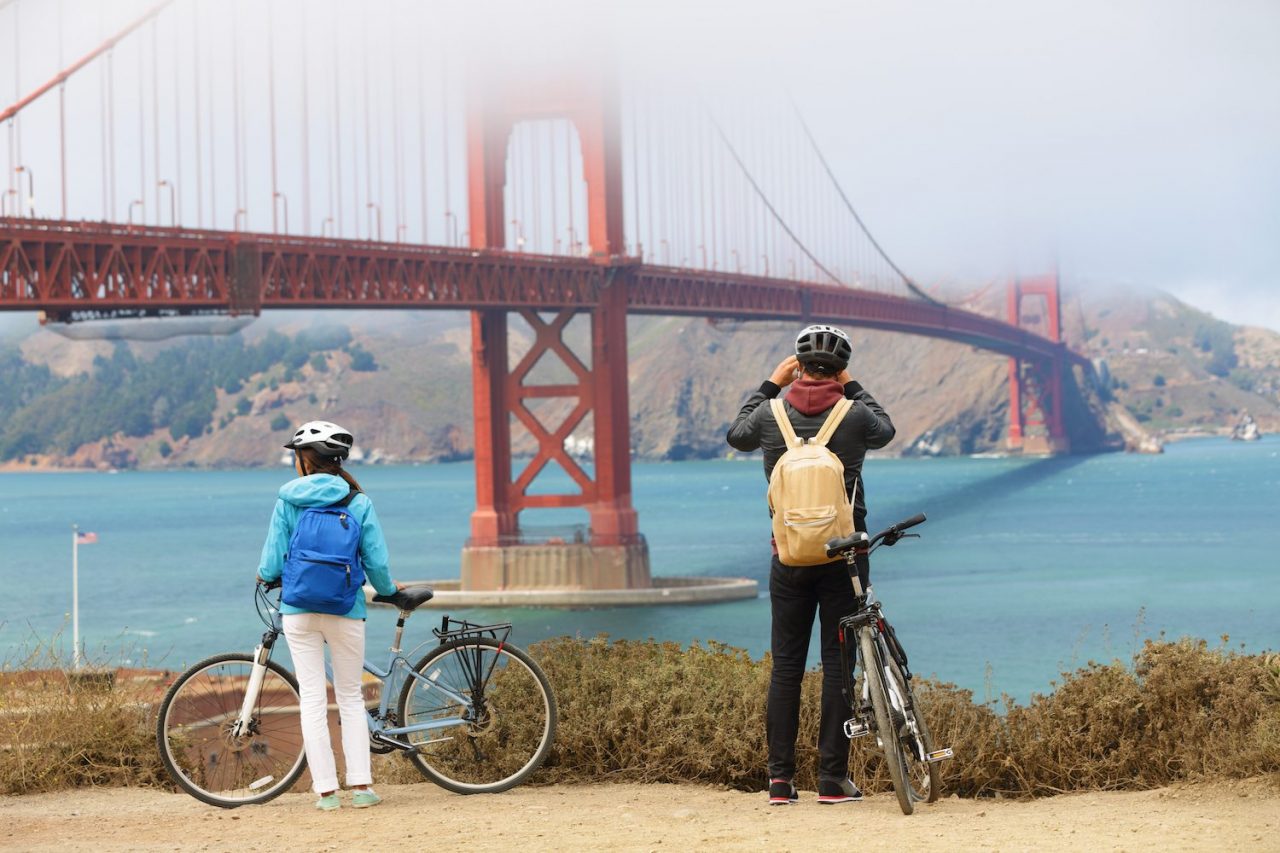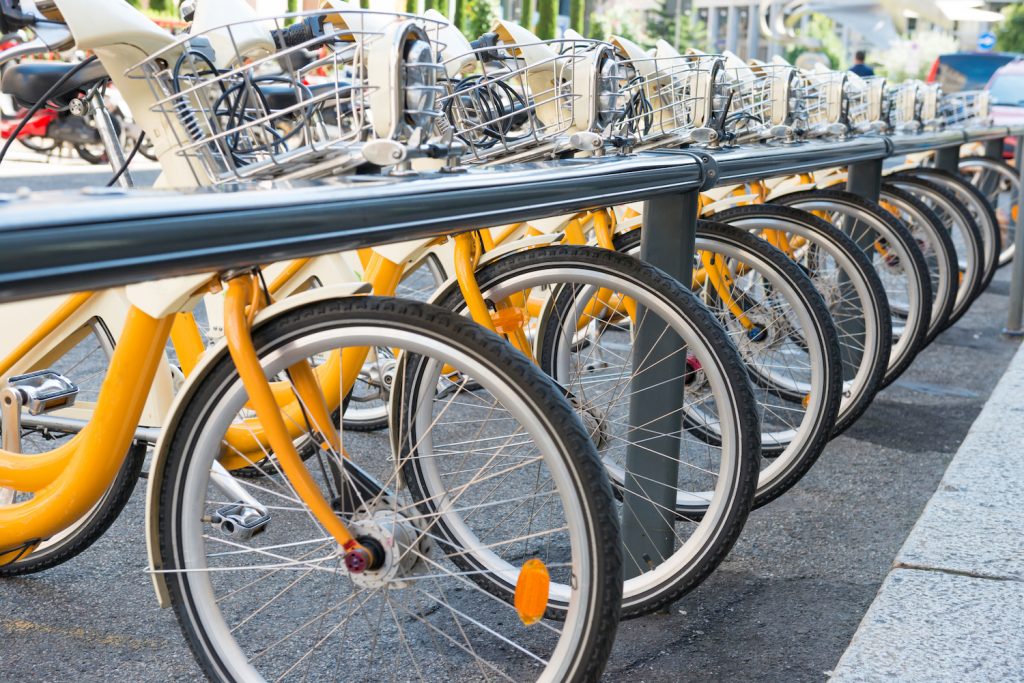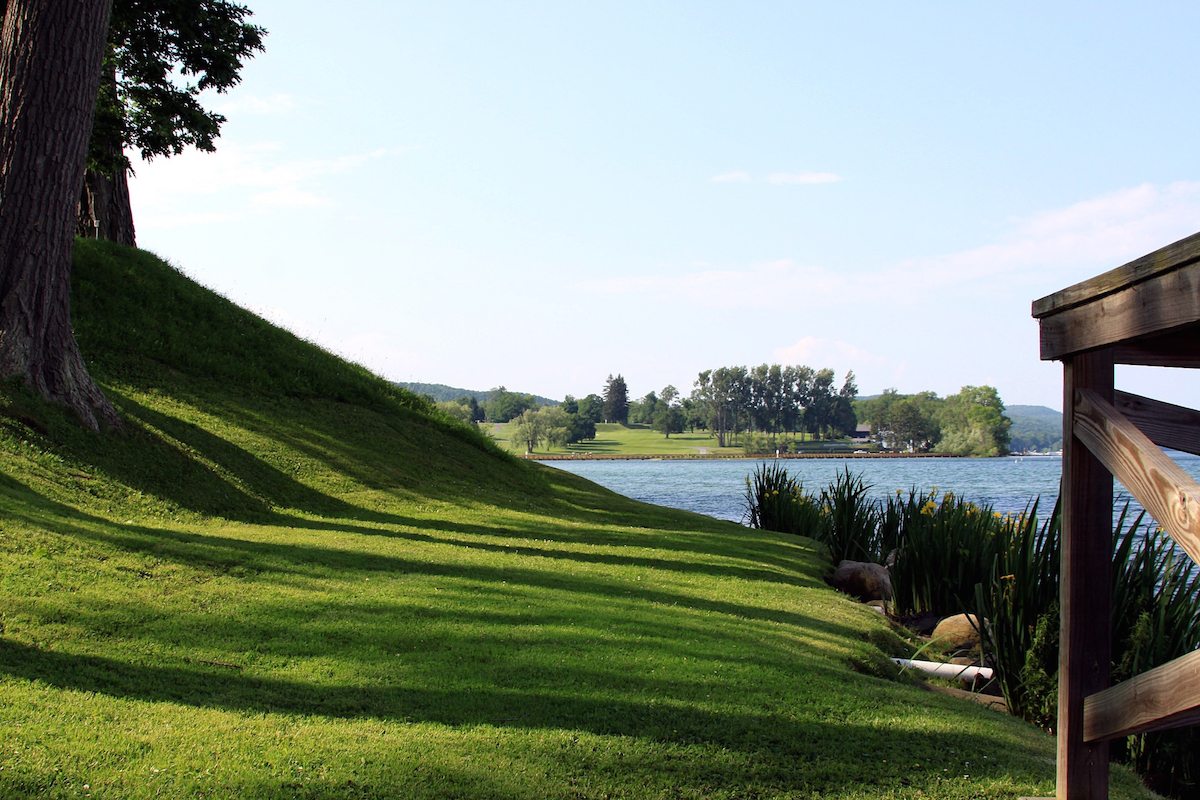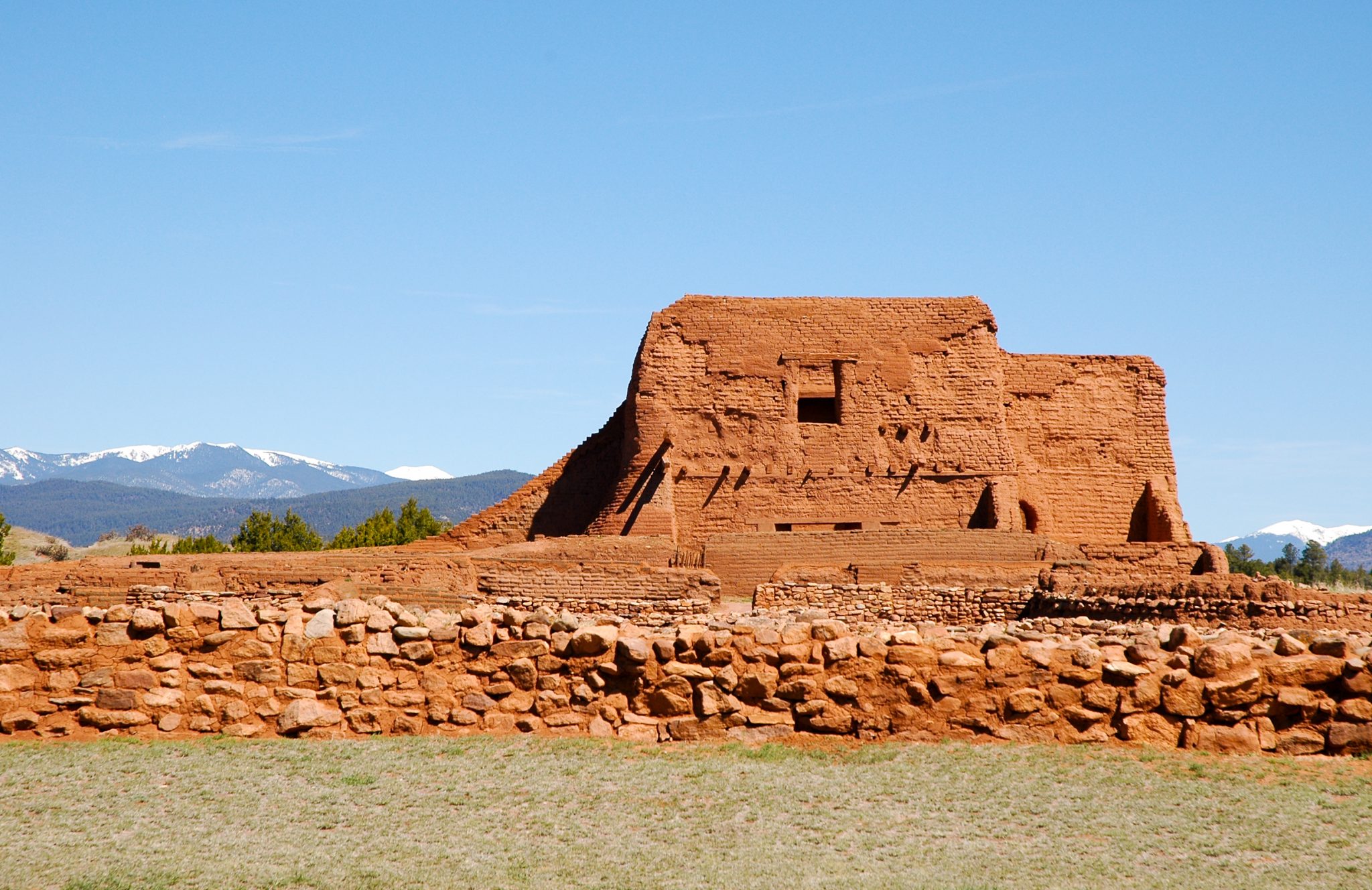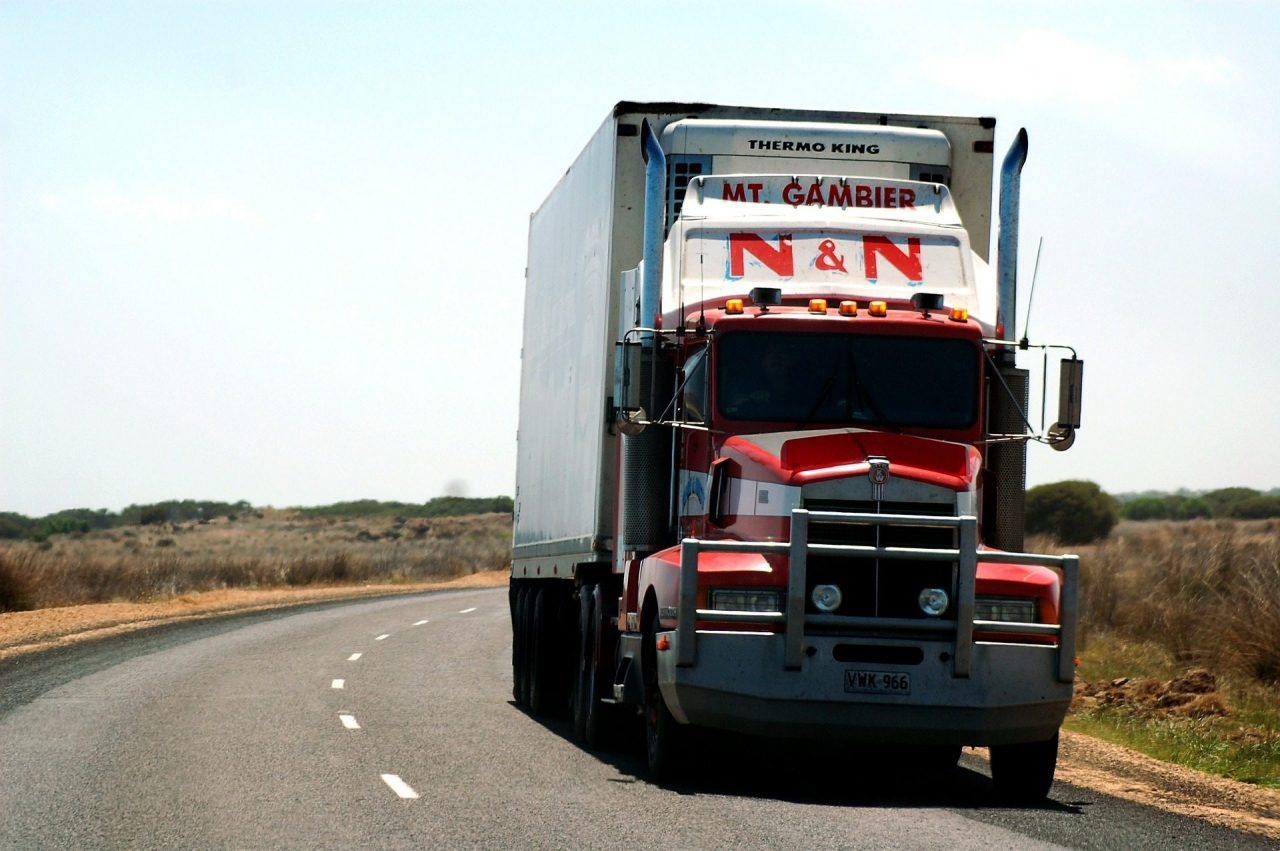As much as I enjoy traveling the country on four wheels, there are times I like to park my Westfalia for a few days to really explore a city on foot or on a bicycle. I used to bring my bike with me, but these days, I’ve found it easier to simply rent one.
In the last several years the number of dedicated places to ride has increased substantially. Many cities have built bike paths or rail trails. Many more have improved conditions for riding in general by demarcating bike lanes on city streets. As always, it’s a good idea to research the possibilities before you leave home.
Bike Shop or Bike Sharing System?
Bike Sharing
I always used to think that renting alike required a visit to a bike shop. That changed a few years ago when I visited Paris and saw an innovative bike sharing system for the first time. The system consists of a number of bike racks strategically located throughout the city. To rent a bike, you simply choose your bike, then swipe your credit card through a slot on the rack. You get a bike, a helmet and a lock in return. When you are done riding, you return the bike, lock and helmet to any other rack in the city. Once you do, your credit card stops getting charged the hourly rate.
There are many variations of the bike sharing system, but the basics are the same. And there are an increasing number of them throughout the world. In the U.S., most are located near or on college or university campuses. You may find this bike sharing page a helpful place to start. (Bike sharing systems are constantly being changed, so please verify that the service is still available by checking local sources.)
Bike Shop
If a bike sharing system isn’t available where you’re going or selection and service are your priorities, a bike shop can set you up with everything you need. I’ve always had great luck renting from shops. They generally take the time to ensure your bike fits the way you ride and adjusts the saddle and handlebar heights, so you aren’t as sore as you might be the day after you ride. In addition, the bike shop personnel can usually provide tips on best riding routes and can often provide a map (be sure to ask, they sometimes don’t remember to offer you one).
Tips to Know Before You Go
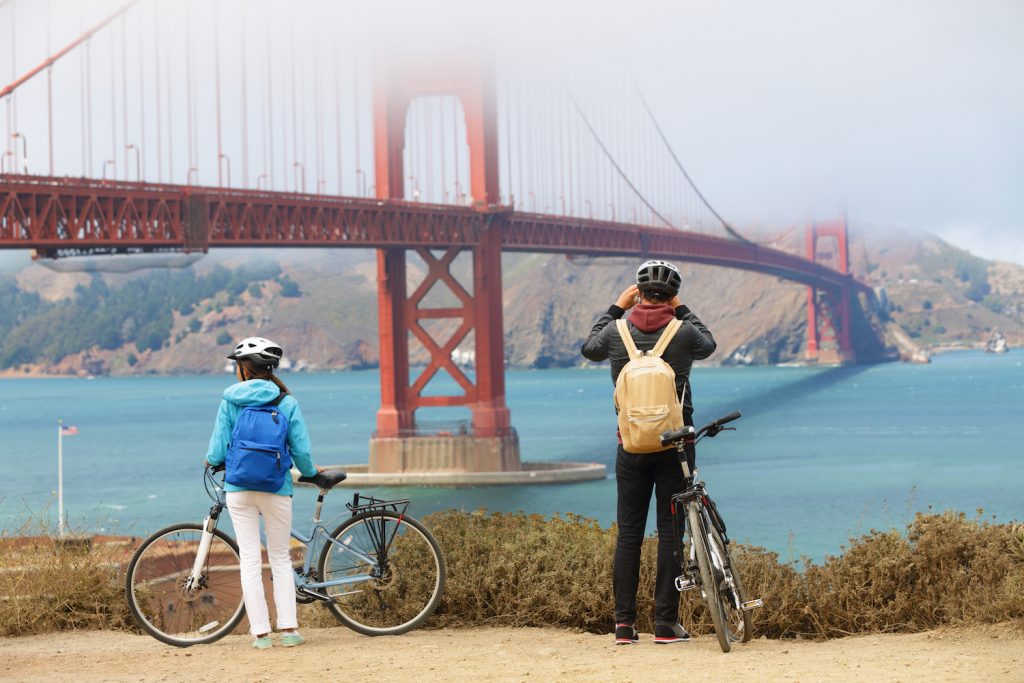
1. Know your saddle height. If you ride a bike at home, take a cloth measuring tape (or a string) and measure the height between the center of the pedal at the downstroke and the height of your bike seat. Mark the height with a pen and bring the tape or string with you, so you can adjust the rental bike accordingly. Your body will thank you!
2. Think safety. If you have a bike helmet and have the room in your vehicle, bring it along. Most bike shops include a helmet with their rental. If they don’t offer one, please ask.
Other safety items I pack in my vehicle in case I rent a bike are my bike lock and lights (my handlebar light snaps on and off and my taillight clips to my backpack). These things take up very little space and I’m always glad I have them with me. (If you don’t own a lock and lights, ask the rental shop to include them with your rental.)
3. Take a test ride. Getting on a new (to you) bike takes a little getting used to. I suggest taking a slow trip (away from people and traffic if at all possible) to acquaint yourself with the bike’s shifting system and double check the fit before you take off to see the sights.
4. Bring a small backpack. I always bring a small backpack with me wherever I roam. For bike touring, I find it especially handy. You never know when you’ll happen upon a farmer’s market, cool shop or grocery store that warrants grabbing a few goodies.
5. Don’t forget the rubber bands! Reflective leg wraps are designed to keep your pant leg fabric from getting caught in the bike chain or spattered with grease. If you don’t own them, I find that a rubber band can do the trick. Bringing a few spares is a good plan.

